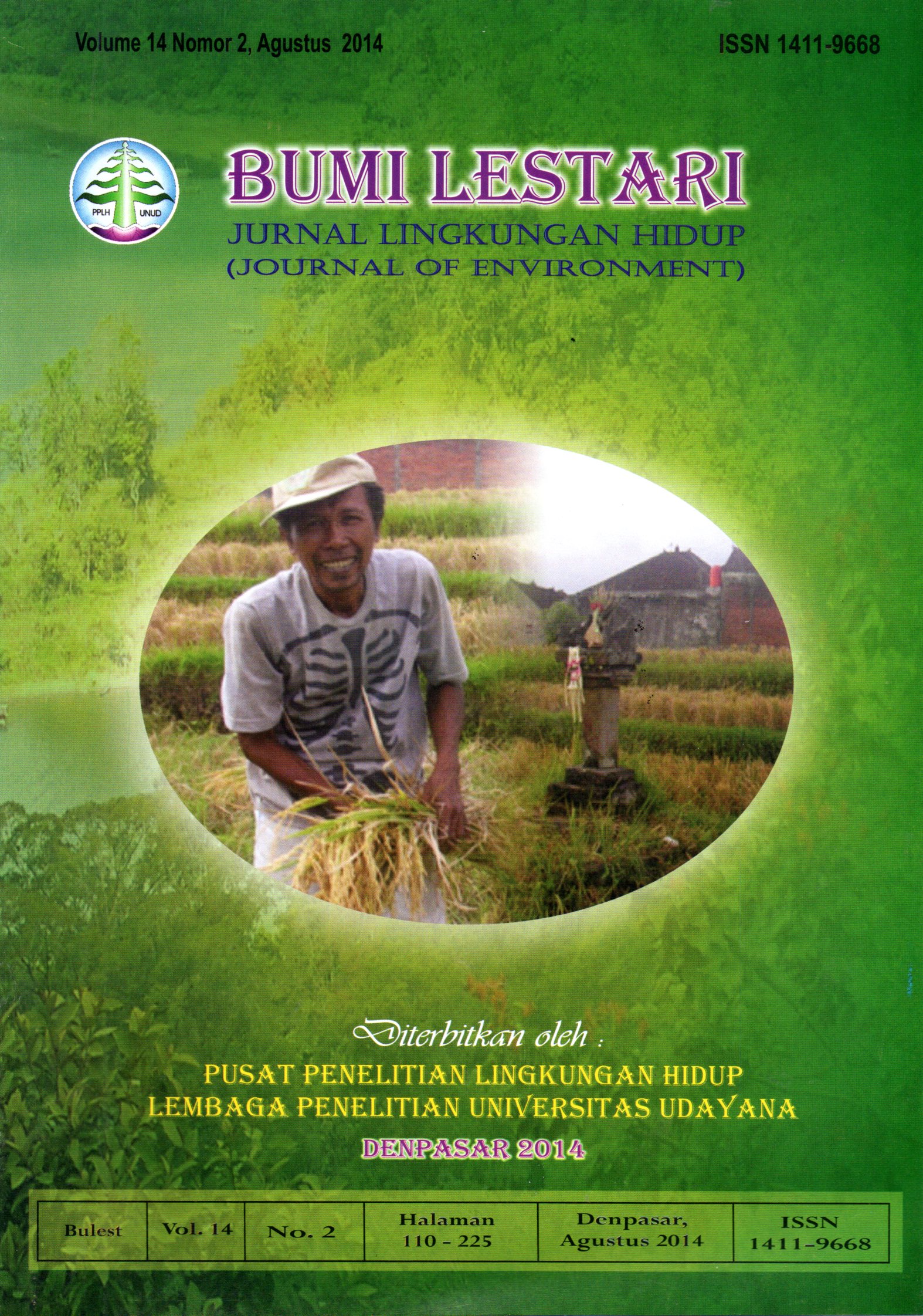DAMPAK PERTUMBUHAN PENDUDUK TERHADAP LINGKUNGAN DAN BUDAYA SUBAK : STUDI KASUS DI KABUPATEN TABANAN PROVINSI BALI
Abstract
The research aims to reveal the trens population growth over the 10 years (2002-2012) inTabanan Regency, as well as their impact on the land conversion of subak as well as other
changes in environmental and cultural aspects of subak. Research conducted through the
stages of data collection and data analysis. The technique of data collection was done by
the library research, observation, and structured interviews with questionnaires and indepth
interviews (depth interview).The data collected was analyzed by descriptivequalitative
and quantitative analysis with the help of cross-tables and analysis of satellite
imagery.
Results
of the study showed, the number of inhabitants of Tabanan
Regency in 2012 reached
441.900
people, consisting of 220. 002-sex guy men and 221.898 women. The livelihoods of
inhabitants,
mostly working in the agricultural sector (110.449
people) and plantations
(45,326
people). Based on analysis conducted, it was revealed that within the last 10 years
(2002-2012)
population growth
reached
26,10% or = 2.61% per year.
The highest growth
occurred
in the district of Kediri 5,76%, then followed by district of Baturiti 5.13%, Marga
4.05%,
and district of Tabanan,
3,69%. The lowest population growth
occurred
in district
Penebel
0.34%, then followed by the district of Kerambitan 0,56% and district of East
Selemadeg
0.82%. The population growth seems to be more of a factor caused by migration
(people
coming) 62,24% (1294 inhabitants) (from the difference in population that comes
3293
with people out 1999 inhabitants), if compared with population growth naturally
only
achieve 37,76% (785 inhabitants).
The
population growth indirectly affects the occurrence of changes in the environment and
culture
of subak. In the past 10 years occurred the shrinking land subak (fields) 672,89 ha,
or
2.95% of the total area of paddy fields in 2002 (22.842 fare ha). Other environmental
effects,
i.e. reduced water supply and the breakdown in some irrigation farmers, pollution
and
the impact of irrigation channel blockage by garbage plastic and aesthetic degradation
of
the environment. Socio-cultural impact of subak, which tendency to the occurrence of
social
conflict, disruption in the silent ritual of rice fields (penyepian carik) and the
abandonment of cultural heritage (pura subak) due to the occurrence of function fields into
housing and tourism facilities.
The protection needs to be done to the environment and subak culture through the population
growth control with government policy, the formulation of customary law of subak (awigawig),
and improve the welfare of farmers through the development of ecotourism that based
on
subak ecosystem.
Downloads
Keywords
Authors who publish with this journal agree to the following terms:
- All articles published by Bumi Lestari Journal of Environment and Environmental Reseach Center Udayana University are made available under an open access license worldwide immediately. This means everyone has free and unlimited access to the full-text of all articles published in Bumi Lestari Journal of Environment, and everyone is free to re-use the published material given proper accreditation/citation of the original publication. Open access publication is supported by authors' institutes or research funding agency by payment of a comparatively article processing charge for accepted articles (See Author Fees). Bumi Lestari Journal of Environment and Environmental Reseach Center Udayana University publish articles under the Creative Commons Attribution License.
- Authors are able to enter into separate, additional contractual arrangements for the non-exclusive distribution of the journal's published version of the work (e.g., post it to an institutional repository or publish it in a book), with an acknowledgement of its initial publication in this journal.
- Authors are permitted and encouraged to post their work online (e.g., in institutional repositories or on their website) prior to and during the submission process, as it can lead to productive exchanges, as well as earlier and greater citation of published work (See The Effect of Open Access).





